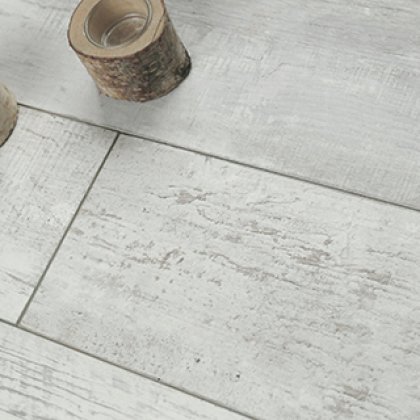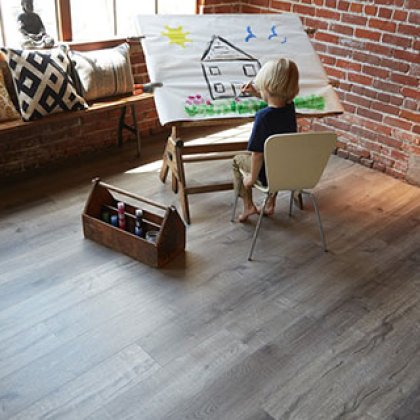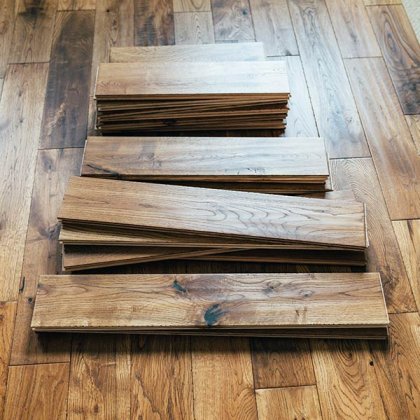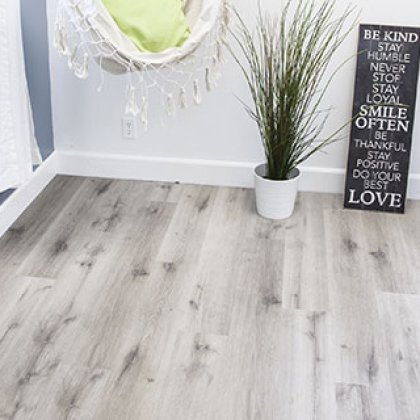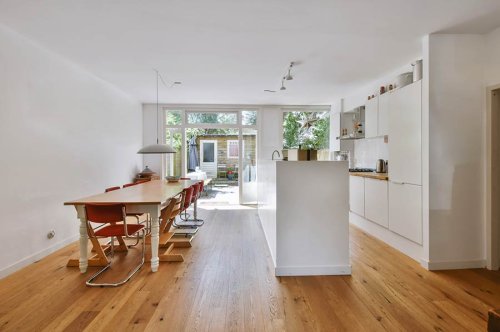Low VOC Laminate Flooring: Breathe Easy in Your Home

Nearly 90% of indoor spaces have some level of volatile organic compounds (VOCs), and laminate flooring is a common source. Choosing the right flooring can significantly reduce your home's VOC emissions, making it safer and more comfortable. Laminate flooring has come a long way in terms of safety and environmental impact, but it's crucial to understand what you're bringing into your home. This post dives deep into laminate flooring VOC emissions, offering insights on how to make informed choices for healthier living spaces.
Key Takeaways
- VOC emissions in laminate flooring can impact indoor air quality, so choosing low-VOC options is vital for a healthier living environment.
- Exposure to high levels of VOCs can lead to health issues such as headaches and respiratory problems, underscoring the importance of selecting safer flooring materials.
- Low-VOC laminate flooring offers the dual benefits of reducing potential health risks and maintaining the aesthetic appeal of your space.
- To identify low-VOC laminate flooring, look for certifications and labels from reputable organizations that test and verify the VOC emissions of building materials.
- Implementing tips like ensuring proper ventilation during installation and opting for greener cleaning methods can further minimize the VOC emissions in your home.
- Making informed choices about laminate flooring can contribute to better indoor air quality and overall well-being.
Understanding VOC Emissions in Laminate Flooring
What Are VOCs
VOCs stand for volatile organic compounds. These are chemicals that easily turn into vapors or gases. You can find them in many items around the house.
Sources of VOCs in Laminate
The glues used to put laminate flooring together have VOCs. So do the resins and finishes on top of the laminate. Even the core materials of some laminates give off VOCs.
Formaldehyde and Other VOCs
Formaldehyde is a well-known VOC in laminate floors. There are also others like benzene and toluene. Over time, these chemicals can escape into the air.
Health Risks Associated with VOCs
Short-Term Health Effects
VOCs from laminate flooring can cause immediate discomfort. People often report headaches and dizziness after being in a room with new flooring. Eye, nose, and throat irritation are also common. Some individuals might have allergic reactions. These symptoms usually appear soon after exposure.
Long-Term Health Concerns
With time, the effects of VOCs can become more serious. They may lead to respiratory issues, making it hard to breathe. There's also a risk of cancer if someone is exposed for too long. Liver and kidney functions might suffer as well. The dangers grow the longer one is around these emissions.
Vulnerable Populations
Certain groups need to be extra careful around VOCs. Children are very sensitive because their bodies are still growing. Pregnant women should avoid exposure to protect their unborn babies. People who already have health problems must be cautious too. Their conditions could get worse.
Benefits of Low-VOC Laminate Flooring
Improved Indoor Air Quality
Choosing low-VOC laminate flooring helps keep the air inside homes cleaner. This type of flooring releases fewer harmful chemicals into the air. It's a smart move for a healthier living space.
Proper ventilation is key during and after installing new floors. It helps clear out any VOCs faster. Opening windows can make a big difference.
Regular cleaning also plays a role. It reduces the chance of VOC buildup on the floor surface. Use gentle, non-toxic cleaners for the best results.
Reduced Health Risks
For safer indoor environments, pick certified low-VOC products. These products meet strict standards for VOC emissions. They are better for everyone, especially kids and pets.
Limiting time spent in areas with new flooring can minimize exposure to VOCs. This is important right after installation.
Air purifiers can help too. They capture VOCs from the air, making indoor spaces safer to breathe in. Consider using one in rooms with new laminate flooring.
Environmental Benefits
Low-VOC laminate flooring means less pollution outside. It contributes to better outdoor air quality. This is good news for our planet.
These floors often come from greener manufacturing processes. Companies use sustainable practices to make them. This reduces their environmental impact.
Eco-friendly materials are common in low-VOC laminates. These materials are better for the earth. They also help reduce overall emissions from production.
Identifying Low-VOC Laminate Flooring
Key Certifications to Look For
When shopping for laminate flooring, certifications are crucial. The GREENGUARD Certification ensures products meet strict chemical emissions limits. It's a sign of safer indoor air.
FloorScore certification is another key indicator. Products with this label have passed tests for VOC emissions. They're considered healthier for home environments.
Lastly, look for CARB compliance. This means the product meets California Air Resources Board standards for formaldehyde emissions. It's one of the strictest requirements out there.
Reading Product Labels
It's important to check product labels for VOC content. Look for specific numbers or "low-VOC" claims.
Certification logos are your friends here. They make identifying safer products easier. Spotting a GREENGUARD or FloorScore logo can save you time.
Don't forget the safety data sheet (SDS). It offers detailed information on chemicals in the flooring. Reading it helps you understand what you're bringing into your home.
Trusted Low-VOC Brands
Several brands stand out for their low-VOC laminate flooring products. Some of these include Pergo, Mohawk, and Shaw Floors. They have good customer reviews and ratings for indoor air quality.
These brands often receive awards and recognitions. They're known for committing to healthier living spaces through lower VOC emissions.
Tips for Minimizing VOC Emissions
Proper Installation Techniques
It's crucial to pick low-VOC adhesives and sealants. They make a big difference. Make sure the room is well-ventilated during the work. Open windows and use fans.
You should also follow what the maker says. This helps avoid mistakes that could raise VOCs.
Choosing Low-VOC Underlayments
Underlayments matter a lot for VOCs. They sit under your flooring. Cork or rubber are good choices because they naturally have fewer VOCs.
Look for underlayments with a low-VOC certification. This means they've been tested and are safer for your air.
Ventilation and Air Purification
Keeping the air moving is key, both during and after putting in new floors. Use HEPA air purifiers to clean the air. They can catch tiny particles, including VOCs.
Always keep windows open when you can. This brings in fresh air, which helps push out bad air.
Closing Thoughts
Understanding VOC emissions in laminate flooring helps you make healthier choices for your home. You've learned about the risks, benefits of low-VOC options, how to identify them, and tips to reduce emissions. It's clear that choosing low-VOC laminate flooring not only safeguards your health but also contributes to a safer environment. Armed with this knowledge, you're now equipped to make informed decisions that align with your well-being and eco-conscious values.
Don't stop here; take action. Start by evaluating your current flooring and consider a switch to low-VOC options if necessary. Remember, every small step towards reducing VOC emissions counts towards a healthier home and planet. Let's make informed choices for our spaces, proving that health and sustainability can indeed go hand in hand.
Frequently Asked Questions
What are VOC emissions in laminate flooring?
VOCs, or Volatile Organic Compounds, are chemicals released into the air from laminate flooring. They can affect indoor air quality and health.
How do VOCs from laminate flooring impact health?
Exposure to VOCs can lead to eye, nose, and throat irritation, headaches, and more serious long-term health issues.
Why should I consider low-VOC laminate flooring?
Low-VOC options improve indoor air quality, making your home safer and more comfortable for everyone, especially those with allergies or sensitivities.
How can I identify low-VOC laminate flooring?
Look for certifications like Greenguard or FloorScore on the packaging, indicating lower levels of VOC emissions.
What are some tips for minimizing VOC emissions from laminate flooring?
Opt for low-VOC products, ensure proper ventilation during installation, and maintain a clean environment to reduce potential emissions.
Is it expensive to choose low-VOC laminate flooring over traditional options?
While prices vary, many low-VOC options are competitively priced with traditional laminate flooring, offering a healthier living space without a significant cost increase.






